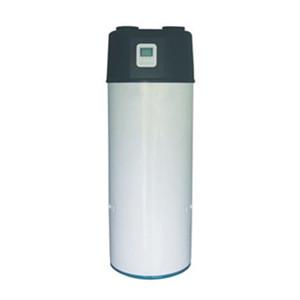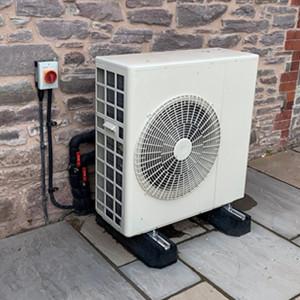Heat Pump Advisor
Government subsidies will be introduced to help residents install heat pumps to replace gas boilers. This technology is likely to become an increasingly popular environmental protection alternative that can replace the use of fossil fuel for your house heating.
In addition to doing its best for the environment, installing heat pumps can also help reduce energy costs.
However, many factors need to be considered before adventure, so this is the information you need to understand -and information about these government subsidies.
What is the heat pump?
The heat pump is an electric device that can pass the heat from one place to another. It is similar to the refrigerator, but the opposite. The heat pump extracts calories from outdoor air, ground or water source and transports it to your home.
However, although the heat pump has many benefits, their conveying temperature is lower than the gas or fuel boilers. This means that you need to run them for a longer time to heat your house to a comfortable temperature.
What are the different types of heat pumps?
The two main types of heat pumps are air sources and ground sources. But if you live near large waters such as lakes or rivers, you can also choose a water source heat pump.
Air source heat pump
The most common heat pump type, air source heat pump conveys calories between outdoor air and your home. The external air blows the pipe network full of refrigerant. The refrigerant is heating up and changes from liquid to gases.
The gas was then compressed, the temperature rose, and then entered the heat exchanger surrounded by water or cold air. When water or cold air becomes hot, it circulates in your home to provide heating and hot water. It can also be stored in the hot water tank.

Ground source (geothermal) heat pumps
The energy stored in the ground can be used to run the source heat pump. However, installation may be more destructive because the heat tube needs to be laid to the ground near your home. This pipe ring is usually a long coil buried in the groove, or the long ring where it may have tens of feet of narrow drilling.
The mixture of water and antifreeze flows around the pipeline, and the heat on the ground is absorbed into it. The fluid then enters the heat pump through the heat exchanger. The temperature of the fluid rises and passes the heat to the water. This can be used to heat your heat sink, for floor heating or stored in a hot water tank.
Water source heat pump
If you live near large waters, you can use water source heat pumps. For example, they extract energy from lakes, rivers or large ponds. Similar to the ground source heat pump, they use a series of pipes immersed in water, which contains a special liquid to absorb the heat in the water. Then use it to warm or provide hot water for your home.
What is the cost of the heat pump?
According to the size and model of the heat pump and the size of your home, the installation cost of the energy -saving trust fund is estimated to be between 7,000 and £ 13,000. The typical cost of ground source heat pump is much higher, between £ 20,000 and £ 30,000.
It is recommended that you find at least three installation personnel to provide quotations to help you find the most competitive transactions.
The operating cost will depend on the design and operation of your heat pump.
Can I install the heat pump at home?
This will depend on the type of real estate you live. If you live in new real estate, it is usually easier to install heat pumps, but if planning regulations allow it, you can still install them in old buildings.
Regardless of your real estate use, it is important to ensure that your insulation is good to prevent heat loss as much as possible. If your house's insulation is poor, a larger pump is needed, which will be more expensive.
If you install the air source heat pump, you need to put a box of about one meter by one meter by one meter outside, even on it. It needs to be located in an easy -to -approach area for cleaning and maintenance.
For this reason, if you live in an apartment or apartment, installing the heat pump may be more difficult. But if you allow it, you can install one on the balcony or exterior wall. The best choice is to discuss your choice with a qualified installer.
If you are a tenant, you need to discuss installation with the landlord.
The installation of the ground source heat pump may be tricky, and you need to leave a piece of land around your home. If you have a large garden, the pipeline can be paved horizontally, but the area must avoid trees because the roots can cause trenches. Trees can also cause the region to be too dark, which prevents the ground from being warm enough.
If you have only one small garden, the pipeline will need to be installed vertically in a drilling hole about 75 to 100 meters deep. This is usually a more expensive choice, and you may need to conduct geological surveys.
For these two options, you usually need to leave room for indoor heat pump units and hot water tanks at home.
For those who consider the use of water source heat pumps, you must make sure you have enough water to hear your house, and you have enough space to lay pipes between water sources and buildings. Similarly, it is wise to talk to professional installed staff before continuing.
In the end, although the heat pump is usually not required to be planned, if you live in a protected area or a protected building, you need to contact your committee to understand the local requirements.
What are the advantages and disadvantages of the heat pump?
Before agreeing to install the heat pump, weighing the advantages and disadvantages to ensure that you understand the whole picture:
Advantage
1. The operating cost is lower than that of oil and natural gas boilers
2. They have a long life span (about 50 years long)
3. It requires less maintenance than boilers
4. Reduce carbon emissions
5. It is safer than burning boilers.
Shortcoming
1. High preliminary cost
2. It may be difficult to install
3. They are not carbon neutral, because they use electricity
4. Some fluids used for heat transfer may not be sustainable
5. Cold weather will cause damage to the system and reduce efficiency.
Can I get a subsidy for installing the heat pump?
If you live in England and Wales, you can get 5,000 pounds provided by the government to replace your gas boiler with air source heat pump. If your real estate requires a ground source heat pump, the subsidy will increase to £ 6,000 because these devices are more expensive.
The plan will operate in the first -served manner, and the upper limit of the payment is 30,000 units per year, for three years. This means that the cost of 90,000 units is about 450 million pounds.
Please note that you will not actually receive any cash or vouchers to pay the pump bill. This process involves you to complete the work, and the contractor directly claims to the gift. Then you will receive a billless bill.
The first step is to find an installation expert who will help you complete the whole process.
However, available funds are unlikely to pay for the total cost of installing the heat pump, so you need to make up for any shortcomings. Residents of social housing and new houses will not receive subsidies.
The cost of heat pumps is usually between 5,000 and 10,000 pounds, plus the cost of using this technology for your family transformation, so please be ready to pay a lot of payments beyond the subsidy.
The plan is part of the government's 600,000 heat pump plan annually by 2028. From 2035, the new gas boiler will also be banned from selling, so if your gas boiler fails, you will not be able to install new ones. New gas boilers are prohibited from 2025.
The ban may also be extended to the gas stove. Climate change experts suggested that the connection of the gas network should be prohibited and the induction cooker should be prohibited. However, so far, I have not confirmed the plan to do.





